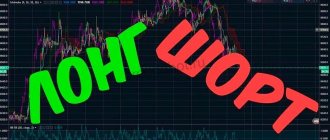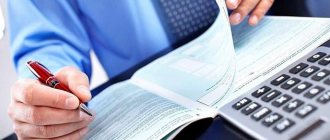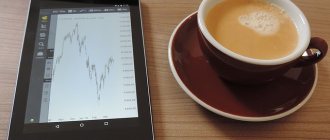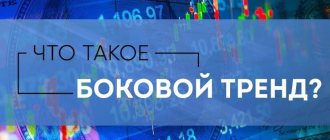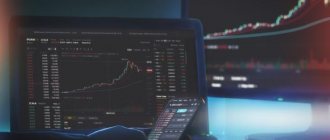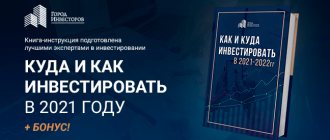Buyback – repurchase of shares on the exchange platform. Organizations buy back shares when there is free money available or the company's management does not know where to allocate the funds. As a rule, a buyback in the economy is something that acts as a catalyst for the growth of capitalization in the stock market; in addition, this process improves the financial performance of the company.
It is possible to make money from the increase in share price as a result of a buyback, but it is important to be extremely careful: in certain situations, the price increase will be short-term, in other situations the company exposes itself to risks by spending very large sums on repurchases. When shares have already been purchased, but external conditions are unsuitable, there may not be an increase. In the American stock market, buybacks are a very popular practice; in 2021, a maximum volume of buybacks has even been set. In the Russian Federation, such an operation is carried out only by some companies. In this article we will take a detailed look at buybacks: what they are , how to work, what their features are and what you need to remember.
What is buy back (Buyback) or share repurchase
Quite often, large companies announce the repurchase of their shares from the stock exchange or directly from shareholders. This often happens when a company has free funds and there are no directions for new investments. In this case, a buyback is a good investment. The purchased securities can be redeemed, thereby changing the capital structure, or they can be redistributed among large shareholders.
Whatever the reason for this decision, a buyback is a large purchase, hence the transactions create an increase in demand. As a rule, quotes for such securities rise. If a company buys its shares at the time of a drawdown, then subsequently there is every chance of selling them at a higher price.
A very important point to note is that share buybacks usually occur at a price above the market price. Next, we will consider the methods of repurchasing securities and the main reasons for the buy-back procedure.
Why is the procedure performed?
There are several reasons why issuing companies buy back their own securities:
- Decrease in liquidity level;
- Restructuring of the authorized capital;
- Obtaining tax benefits on dividends;
- Obtaining a controlling stake;
- Increase in profitability per share EPS;
- Artificial increase in stock price.
It is especially advisable to carry out a buyback for companies whose securities are undervalued on the stock market. After the buyback, the value of the securities increases, since the company buys back its shares at a price higher than the price prevailing on the stock exchange.
On the chart you can see the dynamics of the stock price after the announcement of a buyback by some Russian companies.
Ways to buy back your own shares
So, a buyback of shares is the repurchase by the issuer of its own shares in any of the following ways.
Buyback of shares on the open market (open-market purchase)
This method is the most common. The procedure goes like this:
- On its official website, the issuer announces its decision to repurchase its shares. However, the duration of the procedure can be quite long – from several months to several years.
- Next, the issuer, who in this case is an investor, submits an application to the exchange indicating the price and quantity of securities to be purchased. The timing of the application, as well as its contents, is unknown to other investors in advance.
- The purchase of shares is carried out on all trading platforms where the issuer is represented.
If an ordinary investor bought shares during the buy-back period, as a rule, in the future he will be able to sell these securities at a higher price, because there is an increase in demand.
Tender repurchase of shares at a fixed price (self-tender order)
With this method, the repurchase occurs at a fixed price above the market price and in a shorter period of time - up to several weeks.
To participate in the tender, any shareholder must submit an application. If the number of securities in applications exceeds the supply, the issuer has the right to buy back more shares than were stated in the decision.
The difference between the repurchase price and the market value of the shares is the premium for the shareholder. If the procedure period has expired and the required number of securities has not been purchased, the issuer is obliged to purchase the missing number of shares at the price specified in the offer. There is a risk of a sharp downward change in the market price, as a result of which the company may incur losses.
Tender buyout based on the Dutch auction type (Dutch-auction)
With this type, there is a price range from the minimum value to the maximum. This method was used in Holland when holding auctions for the sale of flowers. In this case, the price range is set by the shareholders themselves.
After the deadline for accepting applications, the minimum price is determined. At this price, all shares are purchased according to applications that do not exceed the minimum established by the auction.
After completing the procedure, the issuer must accept the securities for balance. Such shares are called treasury shares.
Buy and Sell orders in the MetaTrader terminal
In the MetaTrader trading terminal, you can use the special “New Order” window to submit orders.
When you open the window, the “Symbol” field will default to the instrument (currency, index, metal, etc.) whose chart you had open.
In the type column there will already be a “Market Execution” item, and all you have to do is select the volume in lots that you want to trade and click “Sell by Market” to open a sale or “Buy by Market” to buy at current market prices.
Above these buttons the online Bid and Ask prices are shown, respectively. And on the left side of the window you can see a tick chart, where both prices are also indicated.
In addition, to quickly open market trades, you can use the quick trade panel, which is located in the upper left corner of the chart of any traded instrument.
Why do companies buy back their own shares?
So, what are the main goals of the buy back program?
- Increasing interest in securities from investors, growth in quotes, which is stimulated through multiple transactions.
- Restructuring of the authorized capital by reducing the number of shares. Why is this being done?
Example 1. The company issued 1000 shares with a par value of 750 rubles. ($10 or 290 UAH) for each. Thus, the size of the authorized capital was 750,000 rubles. ($10,000 or 290,000 UAH), which was distributed in proportion:
- 40% – investor No. 1;
- 20% – investor No. 2;
- 40% are small shareholders (minorities).
So, in the interests of large shareholders (majority shareholders), a decision was made to reduce the number of shares and distribute them between investors No. 1 and No. 2 in order to increase earnings per share.
The issuer announces a buy back. Such a decision will have the following consequences:
- shares from small shareholders with a total par value of RUB 300,000. ($4,000 or UAH 116,000) goes to the issuer’s balance sheet;
- Next, the Treasury securities are redeemed. At the same time, the size of the authorized capital remains unchanged - 750,000 rubles. ($10,000 or UAH 290,000), and the number of shares is reduced to 600 with a par value of RUB 1,250. ($16.67 or 483 UAH);
- Thus, the investors' shares will be:
– investor No. 1 – 500,025 rubles. ($6,667 or 193,343 UAH) (66.67% of the authorized capital); – investor No. 2 – 249,975 rubles. ($3,333 or 96,657 UAH) (33.33% of the authorized capital).
- Receiving tax benefits. In many countries, dividends are taxed at a higher rate than capital gains.
- Another reason for buying back is to reduce takeover risk. When the price of a company's securities is at a low level, there is a chance that a large investor (competitor) will take a controlling stake.
- In case of excess liquidity, buyback of shares is a good solution for redistributing funds until the moment when the company has a new direction for investment.
- The main reason why buy back shares is carried out is to improve the relationship between the market price and profit per security.
The essence of the deal
If we buy something, we will wait for the price to rise, sell it at a higher price and make money on it. If we sell something, we need the price to fall. Then we will buy the goods back, but at a lower price, and this will be our profit.
That is, a transaction always consists of two transactions: if you bought, you need to sell, and if you sold, then you need to buy back. And only then will the financial result of the transaction, profit or loss, be recorded.
But in the case of Forex, here is a nuance regarding the technical part of working with orders: to close a Buy, you do not need to open a Sell, and vice versa.
These transactions are either closed manually through the trading terminal, or using take profit or stop loss orders. In both cases, the reverse of your original order automatically occurs and the trade is closed.
And if you decide to close your Buy using a new Sell order, then you will simply have a sell open, and two transactions will already be open: both Buy and Sell. By the way, such a situation when two opposite transactions are opened at the same time is called a lock or locking, from the English. "lock" - lock. We also have a separate article devoted to this topic.
You must definitely remember this.
What happens to repurchased securities?
So, in simple words, buyback is the acquisition of your shares as property. Consequently, as mentioned above, after the repurchase, the issuer is obliged to put the shares on the balance sheet (accept for accounting at par value). If a company buys securities in its own name, then they must be sold or redeemed within a year. If the repurchase is carried out in favor of a subsidiary, you can keep the assets on the balance sheet for an unlimited time.
There are then four options:
- redemption of securities in order to increase earnings per share and stimulate market price growth;
- sale to investor;
- management motivation (distribution of shares among company employees);
- distribution among large investors (as described in the example above).
As a rule, buyback has a positive impact on market quotes: demand increases while supply remains constant, and accordingly, the price goes up.
If shares are redeemed, their number is reduced, which means the amount of profit and dividends per security increases.
What is buyback?
The concept of buyback (then they write buyback) is the Russified English expression buyback - reverse purchase. In this case, we are talking about the repurchase (repurchase) of shares by the issuing company, i.e. the company that issued these same securities into circulation.
The reasons for a buyback can be very different:
- reduction in the number of shares in free float (float-free);
- excess liquidity that needs to be “placed” somewhere (the company earned a lot of money and believed that buyback was a good investment);
- the desire to raise stock quotes on the stock exchange (why is this necessary?);
- reducing the number of shares in circulation to increase profit by 1 security;
- reduction of the dividend load - if there are fewer shares in circulation, then less dividends have to be paid;
- desire to protect against a change of ownership;
- carrying out capital restructuring.
Sometimes companies organize buybacks when shares are very cheap in order to later sell them more profitably. Sometimes it is necessary to cancel some issue of securities, and in order to do this, companies resort to buybacks of shares.
Another goal is to withdraw shares from the exchange (delisting). In this case, the company seeks to collect as many shares as possible in its hands in order to subsequently announce the purchase of the balance from minority shareholders.
Repurchased shares become treasury shares: they are taken into account on the company's balance sheet and are shown in capital, but do not participate in the distribution of profits (i.e., dividends are not paid on them). Subsequently, if necessary, the treasury block of shares can be sold again on the stock exchange or redeemed. Redemption of treasury shares will lead to a decrease in share capital, and sale will result in an increase in free-float.
It is necessary to distinguish buyback, which is carried out by the company, from active purchases on the part of large shareholders (majority shareholders and insiders). For example, Potanin is actively buying back Norilsk Nickel shares in order to get more votes than the other co-owner of the company, Deripaska.
And the president of Lukoil, Vagit Alekperov, is buying shares of his own company to increase his capital. While the company itself is conducting an extensive buyback campaign to reduce the number of shares on the exchange, increasing the yield per security.
How to find out about stock buybacks
All information about share repurchases is contained in open sources. Most often, issuers announce their decision to conduct a buy back on their official website. This information then appears on various websites used by investors.
You can learn about the procedures already carried out from the financial statements, in the “Cash Flow” section. If the value on the line “Issue of shares” is negative, this means that the company carried out a buyback in the past year
.
Russian practice
According to many experts and stock analysts, domestic companies underestimate share buybacks as a tool for creating additional value.
In Russia, companies are accustomed to focusing on a stable dividend policy. It is believed that such an approach is more interesting to security holders than isolated cases of buy-backs.
There is no doubt that the negative experience of implementing similar programs in our country is also important. You don't have to look far for examples. The issuers of MMC Norilsk Nickel and Uralkali have stories of such failures.
Nevertheless, there is a point of view that in the near future the number of buy-backs implemented on the Russian market will increase. 2021 is indicative in this regard. Rosneft, Lukoil, Magnit, MTS, AvtoVAZ, Lenta, Aeroflot and other companies announced share buybacks.
Reasons for the procedure
In European countries and the USA, buyback is often carried out in order to save on taxes, because... Buybacks are more profitable than paying dividends. Therefore, the procedure is strictly regulated by law. There are the following restrictions on the volume of repurchase of own securities:
- in the USA - no more than 25%;
- in Europe – no more than 10%.
In Russia, the basis for a buyback program may be the following factors:
- reduction of the authorized capital of a joint-stock company. This procedure must be specified in the charter. The Civil Code of the Russian Federation (clause 4 of Article 99 as amended by Law No. 99-FZ dated 05.05.2014) regulates the relationship between the size of the net assets of a joint-stock company and the size of its authorized capital. If for two years in a row the value of net assets is less than the amount of the authorized capital, the company is obliged to equalize this ratio: either increase the NAV or reduce the authorized capital. This can be done in two ways: by reducing the par value of shares or reducing their number;
- reorganization of the company in the form of merger, acquisition, accession, etc.;
- requirement of a majority shareholder (holder of more than 95% of shares);
- decision of the board of directors (percentage of votes up to 10%);
- decision of the general meeting of shareholders (percentage of votes up to 25%).
A buy back can be carried out on the open market or through options, where each shareholder is sent an offer indicating the timing of the procedure and the price of the securities. Shareholders have the right to accept or reject this offer.
Buyback and dividends
For shareholders who do not intend to sell their securities, buyback is beneficial in the event of cancellation of shares after their repurchase. To understand how benefits are calculated, consider Example 2 .
The company's authorized capital consists of 500,000 shares with a par value of RUB 3,750. ($50 or 1,450 UAH) each. Thus, the size of the authorized capital is $25,000,000. Over the past year, a net profit of $15,000,000 was received, which was used to pay dividends in full.
Dividends per share were:
15,000,000/500,000= 2,250 rub. ($30 or 870 UAH).
The following year, the company's management decided to carry out a buyback of 10% of the securities. Thus, the number of shares was reduced to 450,000.
If net profit remains the same, earnings per share will be:
15,000,000/450,000=2,500 rub. ($33.33 or 967 UAH).
It should be recalled that during the period while the repurchased shares are on the balance sheet of the enterprise, dividends are not accrued on them.
In Russia, the tax rate on dividends and income tax on the sale of property is the same - 13%. Therefore, it will be more profitable for the investor if the company conducts a buyback every year. After a certain period, the securities can be sold and paid once 13%, while with annual dividend payments, only the tax-free amount can be reinvested. In our example, this is 1,958 rubles. ($26.10 or 757 UAH) \( (30-(30*0.13)) \).
Achievements for the Fatherland
Bauyrzhan Baibek - holder of the orders “Kurmet” (12/15/2008) and “Parasat” (12/15/2014), medals: “10 years of the Constitution of the Republic of Kazakhstan”, “10 years of Astana”, “Kazakhstan Republic of Kazakhstan 20 years old”, holder of an honorary badge “Til Zhanashyry” and the “Elimzhan” badge, and was also awarded letters of gratitude from the President of the Republic of Kazakhstan.
In addition, the akim of Almaty at one time even wrote books: “State Protocol of the Republic of Kazakhstan” (2004, co-authored), “Guide to the State Protocol of the Republic of Kazakhstan” (2005), compiler of two editions of the book “One Year of the President”, author of several articles on political science.
Collage by Nurzhan Abil-Akim
Baybeks in Russia
Here are a few examples of buyback from the Russian economy.
- Lukoil. The company announced a buyback in 2021 to increase shareholder value. As part of the program, the repurchase of shares in the amount of $3 billion is announced, which is about 16% of the total size of the issuer's securities.
- Magnet. The grocery retailer conducted a buyback in 2021 to stimulate management. The repurchase volume amounted to about 16.5 billion rubles, which is approximately 4% of the total number of shares.
- MTS. A large mobile operator carried out buy back in 2021 on the open market. As a result of the program, stock quotes increased noticeably.
- Rosneft. Another oil giant announced a $2 billion buyback in 2021. (3% shares) in order to support the company's capitalization.
Buyback. Who conducts it on the Russian market
Buyback, or share buyback, is the process of a company acquiring its own shares. The most common practice is to buy back securities from the open market. This method of conducting a buyback leads to the fact that the demand for shares increases and their price rises.
We can say that share buyback is one of the ways to reward shareholders along with dividends. In addition, the securities of companies that conduct buybacks tend to be more resilient during periods of market instability.
How to keep track of buybacks
Company announcements about stock buybacks can get lost in the heavy news cycle. Collecting information takes a lot of time, because each issuer publishes data on share repurchase in free form and with different frequency.
To constantly stay informed, an investor needs to carefully monitor all company publications - this was the case until recently. Now BCS Express has a new service - buyback calendar . It collects and presents in a convenient form all available information on the buyback of shares of Russian companies.
Follow buybacks
Buyback is actively carried out
Rosneft
On August 6, 2021, the Rosneft Board of Directors approved the launch of a share repurchase program in a maximum volume of up to $2 billion, or up to 340 million shares. The program implementation period is until December 31, 2020.
The buyback of Rosneft was approved back in 2021, but purchases began only in March 2021 amid a collapse in prices due to the coronavirus. Since the start of purchases on March 23, 52.2 million securities worth about $232.3 million have been purchased. This corresponds to 15.4% of the maximum volume of securities to be redeemed, or 11.6% of the maximum buyback amount.
Peak volumes of share repurchases occurred in April, when markets were near local minimums. Buyback volumes declined over the summer following a decline in trading activity and lower volatility. However, already in September the buyback intensified.
Purchases within the Rosneft buyback are carried out almost daily, that is, quotes are constantly supported by share buybacks.
MTS
On March 20, 2021, the company announced the approval by the board of directors of the repurchase of its own shares in the amount of no more than 15 billion rubles. The first purchases began in April, and since then 18.5 million shares have been purchased, which, according to our calculations, corresponds to RUB 6.15 billion. Thus, to date, 41% of the amount allocated for buyback has been used.
The buyback of MTS shares is different from the buyback of Rosneft. Firstly, the repurchase of securities from the market occurs not daily, but periodically. The company notes that this depends on market conditions and liquidity needs.
Secondly, MTS buys back shares not only from the open market, but also from the majority shareholder - AFK Sistema. For each share purchased from the market, the company purchases one security from a financial holding company. Because of this, the influence of buyback on market quotes is 2 times lower than it could be if the securities for the entire 15 billion rubles. were bought from the market.
The positive point is that with such a buyback, the free-float share does not decrease - this minimizes the risk of an outflow of funds from investors for whom this indicator is important.
Yandex
In November 2021, Yandex decided to launch a buyback program worth up to $300 million. The buyback program is designed for a period of up to 12 months. The company noted that the timing and volume of share repurchases will depend on many factors, including market conditions.
Yandex discloses the results of the buyback program only on a quarterly basis. At the end of the second quarter of 2021, the company repurchased 4.7 billion shares, which corresponds to about 1.3% of the authorized capital. In total, since the launch of the program, securities worth $156.3 million have been purchased, or 52.1% of the amount allocated for the buyback.
Yandex has previously bought back its shares from the market. The buyback program, announced in the second quarter of 2021 for $100 million, was exceeded, and the total buyback amount was $140 million. Now there is also a possibility that the buyback will occur faster than announced.
Globaltruck
Globaltruck, one of the largest Russian road freight carriers, announced in November 2021 the launch of a buyback valid until May 31, 2021.
As part of the buyback program, the company intends to purchase no more than 5% of all Globaltruck shares (2.9 million units) at a price not exceeding 132 rubles. for paper. Thus, the total volume of buyback shares will not exceed RUB 386 million. From the launch of the program until the end of August, 1.2 million shares were purchased, or 40.3% of the maximum designated 5% of the authorized capital.
The company notes that the volume of shares purchased is determined taking into account the dynamics of quotes, market price and liquidity of shares, as well as market conditions during the period of the program.
Carry out periodically
Novatek
Buyback of Novatek is the longest on the Russian market. The program was announced in 2012, and since then the securities have been repurchased from the market every year. The Company notes that the repurchased shares and GDRs may be used to finance operations or to reward management and key employees.
The acquisition of shares from the market occurs sporadically - more often at the beginning of the year. In just a year, the company can buy back the planned volume of securities of 10–20 tranches, then purchases stop. That is, there is no stable influence on quotes from buyback.
In 2021, the volume of buybacks has grown significantly - almost as many securities were bought back in a year as in the previous 5 years. Peak purchases occurred in February-March, when markets were at lows due to the coronavirus. That is, we can say that in 2021 the buyback factor still supported Novatek shares during the period of market instability.
To date, 31.4 million shares have been purchased, which, according to our calculations, corresponds to about $367.3 million, or 61.2% of the maximum amount allocated for buyback.
AFK System
The AFK Sistema share repurchase program was launched in September 2019. The financial corporation intends to buy back shares in the amount of up to 3 billion rubles. or 300 million pcs. The purchased securities are planned to be used to motivate management.
To date, 120.6 million shares have been repurchased for a total of RUB 1.6 billion. This is equivalent to 40.2% of the declared maximum number of shares and 54.8% of the amount allocated for the program. The last buyback purchases were in December 2021.
An interesting feature of AFK Sistema buyback is that the buyback was strictly linked to the share price - securities were only bought for less than 15 rubles.
During a teleconference following the results of the second quarter of 2021, Vladimir Travkov, Vice President for Finance and Investments of AFK Sistema, announced the suspension of the share repurchase program for 2020.
“We believe that we now have a sufficient number of shares to ensure the implementation of a long-term management incentive program. Therefore, I think we will not continue the share repurchase program this year,” Travkov said.
It can be assumed that buybacks will resume in 2021.
Russian Aquaculture
At the end of 2021, Russian Aquaculture Group announced the start of a share repurchase program in an amount not exceeding 300 million rubles. However, already in June 2021, the volume of funds allocated for buyback was increased to 600 million rubles.
The program is valid until June 30, 2021 or until the maximum amount of funds allocated for buyback is reached. The repurchased shares are planned to be used to motivate employees, and also, possibly, for redemption. At the end of the first half of the year, shares worth 294 million rubles were repurchased, or 49% of the maximum amount.
Unfortunately, the company does not disclose the frequency of acquisition of shares from the market. Because of this, it is problematic to assess the impact of buyback on quotes.
Shoes Russia
The Obuv Rossii share buyback program was announced in October 2021. Its maximum volume should not exceed RUB 900 million and is valid until the end of 2021.
The first buyback purchases were made already in October 2018, after which the company bought back the securities in October 2021. Since then, there have been no reports of new purchases.
In total, since the launch, 283.2 thousand shares have been repurchased for a total amount of about 13.2 million rubles. This corresponds to 1.5% of the maximum approved repurchase volume.
One might assume that in October 2021 Obuv Rossii will conduct another round of buybacks of its own securities. However, on August 10, 2020, the company’s board of directors decided to increase the authorized capital through an additional placement of 28.3 million shares, which is 25% of the authorized capital. Thus, the likelihood of a share buyback in 2021 is reduced.
Child's world
Detsky Mir has been using share buybacks to motivate management since 2021. The company does not disclose the specific parameters of the program and the volume of share buybacks. It can only be noted that since 2021, about 4.7 million shares have been acquired, which corresponds to 0.63% of the authorized capital. Of these, 1.2 million shares, or 0.16% of the authorized capital, were purchased in March 2021.
SAFMAR Financial investments
In November 2021, the board of directors of SAFMAR Financial Investments approved a three-year share repurchase program worth up to RUB 6 billion. The program began to operate from the moment of approval, but the specific parameters of its implementation are difficult to determine at the current moment.
Examples of buy-backs
Now let's give a few examples from foreign practice.
- BH Billiton. A major mining company announced its decision to conduct a buyback in 2010 in order to get rid of excess liquidity reserves. For the period from 2010 to 2021. the corporation bought back about 8.3% of the share capital.
- IBM has been conducting buybacks since 1994. The amount of ransoms amounted to more than $10 billion.
- Apple has been doing share buybacks since 2013. When the company announced the start of a buyback, the securities rose by 8% in one day. For the period from 2013 to 2015. The company's market capitalization increased by approximately $200 billion.
- Microsoft Corporation began conducting buybacks in 2007. For the period from 2007 to 2013. approximately $125 billion worth of shares were repurchased. In 2014, an open-ended buy-back program for the company’s securities was announced.
Education
Bauyrzhan Baibek himself also decided to study music professionally. Graduated with honors from the music school named after. Kulyash Baiseitova in Almaty, piano class. Later he became a scholarship recipient of the Bolashak program 1994-1998 in the Federal Republic of Germany. He completed a simple one-year program at the Goethe-Institut Bremen, 1995 in the specialty “German Language” (TestDaF), which is intended primarily for applicants intending to study at higher educational institutions in Germany. Then he studied at the Higher Music School of Lübeck (1995-1998), specialty - teacher.
In 2002, he graduated in absentia from the Central Asian University (CAU) in Almaty with a degree in international economics and was invited as an assistant to the presidential administration in Astana.
In total, the akim of Almaty has three higher educations: music, pedagogy and foreign economics. Speaks Kazakh, Russian, German and English.
Advantages and disadvantages
So, what positive results are achieved after a buy back? In this article they were discussed in sufficient detail, so let’s formulate it briefly:
- Growth in stock market prices.
- Increased demand for securities, increased interest from large investors.
- Increasing share capital and increasing earnings per share.
- Getting rid of excess liquidity.
- Tax savings.
However, the program also has disadvantages. In some cases, buyback may not bring benefits and even result in losses for shareholders, namely:
- In case of repurchase of securities in order to stimulate management, the buy back program may be beneficial only for a limited circle of people - the company's top managers. The fact is that the remuneration of such employees is calculated within the framework of option programs that are tied to stock quotes. If profits increase, prices go up and vice versa. Thus, buy-back here is just one of the ways to increase employee income.
- If an issuer has excess cash and no new investment opportunities for several years, this may be a sign of stagnation and should alert a long-term investor.
- In the case of a repurchase of shares in favor of a subsidiary, often nothing changes for shareholders - the number of securities and earnings per share remain at the same level.
What should an investor do?
Having learned about the upcoming buyback, you must first find out the reasons that prompted the issuer to carry out the buyback. If this decision was caused by the fact that the company considers its shares to be undervalued on the market, then the investor can make good money on the buyback, because buybacks typically drive prices higher.
If you are a long-term investor and do not plan to sell shares in the near future, you need to track financial statements and calculate the approximate amount of dividends. This is easy to do using our examples. The only thing is that it is impossible to predict the size of net profit. But you can use data from last year's financial statements. It is also recommended to monitor the company's development in the field of new investments.
For a short-term investor, you need to pay attention to the size of the premium. If you purchase securities before the buy back starts, you can get a good income. In this case, one should take into account the current volatility indicators for this asset on the stock market.
What to consider when analyzing buyback
When assessing the prospects of buyback companies, one should not exaggerate their impact on the dynamics of stock prices. There are other, no less important factors: revenue, net profit indicators, geopolitics (sanctions), ruble exchange rate, mergers and acquisitions (as well as rumors about them), raw material quotes, dividend forecasts, etc. And most importantly: how undervalued the company is or overvalued by key ratios (P/E, EPS, etc.). Overbought shares are difficult to keep from falling by artificial manipulations such as buyback. Especially if 2–5% of the volume circulating on the market is bought back. Therefore, each company should be considered individually and take into account the impact of the buyback on its financial performance. From analytical sources on this topic I can recommend, for example, https://invest-idei.ru/insider-radar/buybacks.
You also need to consider:
- the share of repurchased shares (there is a significant difference between 3% and 25%);
- the purpose of the buyback, because upon cancellation (redemption) of the purchased securities, they leave the market and contribute to price growth, and when transferred to employees they remain as an operating asset;
- whether the company’s management is buying shares on the market (positive signal);
- what is the participation rate of minority shareholders, that is, how much they will be able to present their securities for redemption in comparison with holders of large blocks, including those affiliated with the issuer.
I also recommend reading:
Shares of European companies for portfolio diversification
Why are shares of European companies interesting?
An interesting moment for an investor arises when the issuer's offer is better than the market. By purchasing shares on the eve of the company's launch, you can earn 10-20% per annum in a few weeks. True, for this everything must go according to plan:
- the buyback must take place, and preferably within the scheduled time frame;
- the issuer is obliged to buy the declared volumes (if demand exceeds supply, the company may refuse to buy the entire package);
- the costs of the buyback should not sharply increase the company's debt burden (buying back with credit funds, especially in Russia, is a serious risk);
- volatility of quotes should not destroy the investor’s initial calculations.
When companies launch buybacks, they often conduct a PR campaign aimed primarily at minority shareholders. Such a measure should support optimism about its shares and increase their value. You should treat this carefully and not take on faith everything that the issuer’s representatives say. They may be mistaken about the undervaluation of their shares, or they may deliberately exaggerate it.
